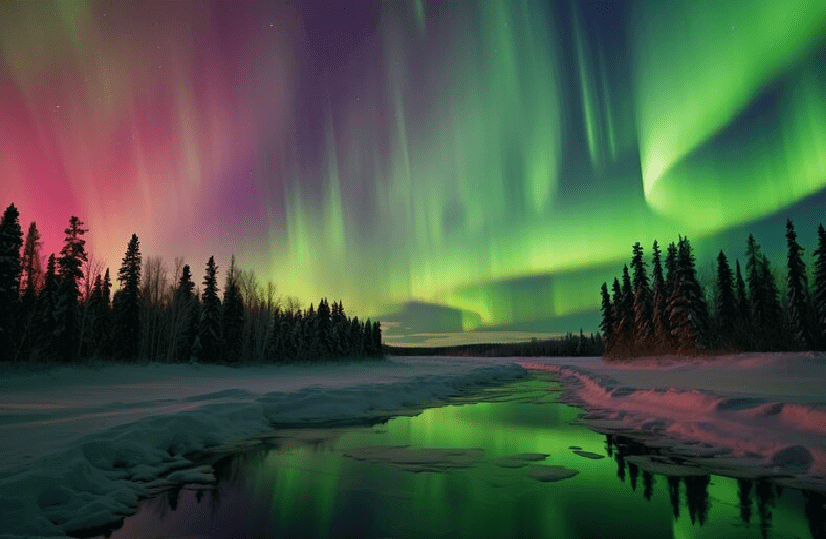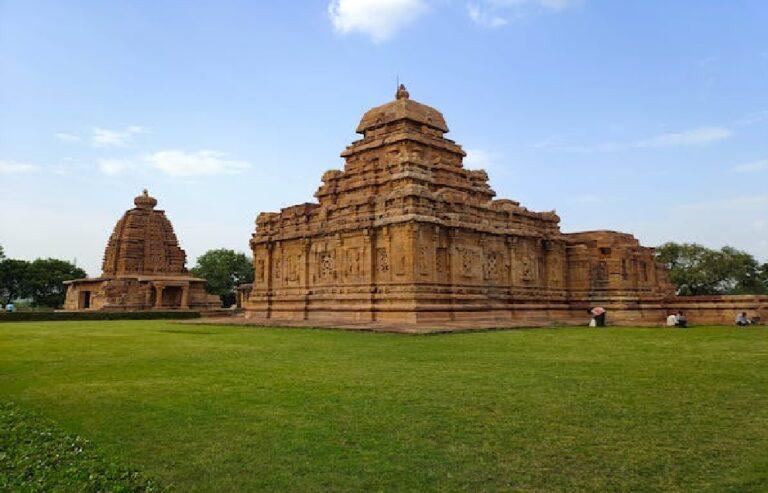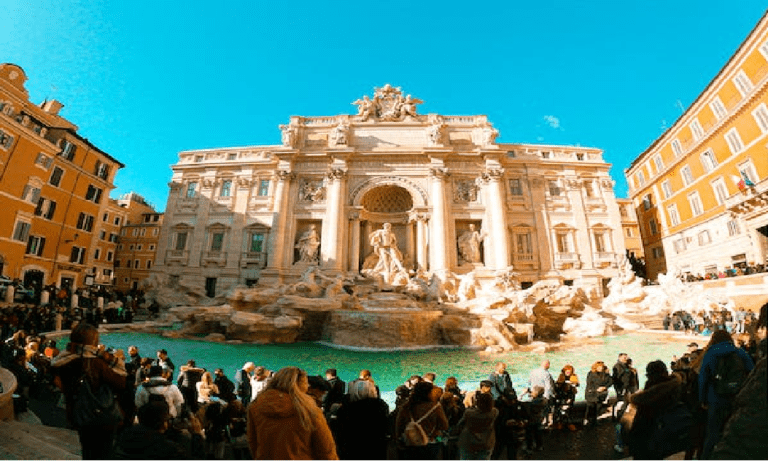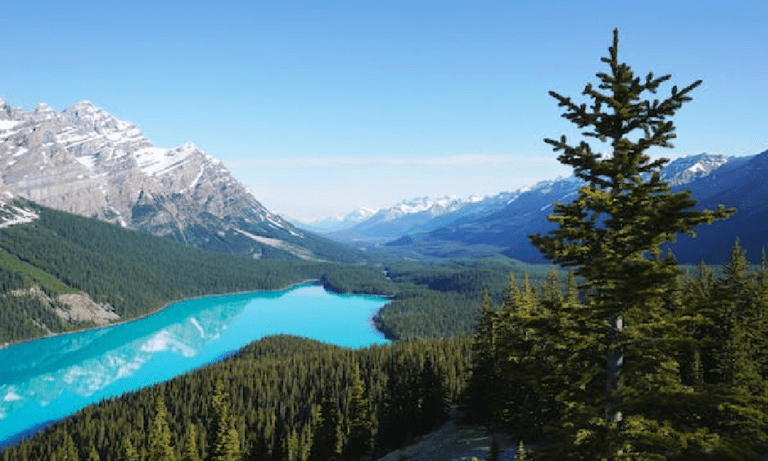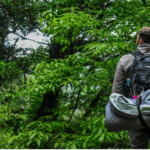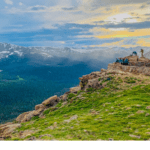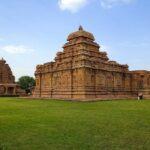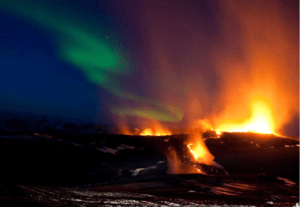
Are you a lover of the environment and keen to discover pristine landscapes and unusual ecosystems? If so, Iceland and its breathtaking northern lights await you in the realm of ecotourism!
Iceland is renowned for its astounding natural beauty, geological wonders, and dedication to sustainability, making it an ideal destination for adventurers. As we get into all there is to know about Icelandic sustainable tourism, read along.
Iceland is an odd country formed from the second largest island in Europe. A small but incredibly satisfied and developed population lives on a volcanic island with stunning scenery.
Comparing Iceland to other countries around the globe is impossible because it is such a special place. A situation in which an island at the North Pole and on the way to America exists apart from Europe.
This article delves into Iceland’s wonders of the Northern Lights, Fire, and Ice of the World’s Most Marvelous Country in 2024.
I. Icelandic cultural history
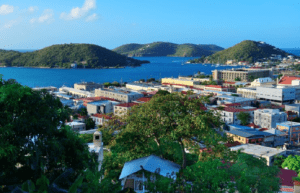
Great volcanic activity in the area created Iceland and the islands that surround it. Although the Scandinavians most certainly landed on the island in the ninth century, radiocarbon testing revealed that there had been occupants centuries earlier.
Established in 874, Reykjavik is the capital. Furthermore, noteworthy is the establishment of the Icelandic parliament, Alþingi, in 930, which is still in existence today. Presumably the earliest parliament in human history.
Up until it essentially broke away from Denmark and became a republic, Iceland had several independence movements from Scandinavia.
Along with the Black Death, it had the Affliction of the Mist in 1783, when the Laki volcano erupted, killing half of the animal species, many plants, and a portion of the inhabitants.
II. Iceland as an Ecotourism Destination
When the Eyjafjallajokull volcano spewered so much smoke in 2010 that it prevented air travel between Europe and North America for twenty days, Iceland started to become a major tourist destination. Then came TV programs that positioned their characters there, such as Vikings and Game of Thrones. It also helps a great deal that everyone there speaks English.
Offering a special fusion of adventure and sustainability, Iceland is a popular ecotourism destination. The country is notable for its dedication to preserving the environment and utilizing renewable energy sources, such as geothermal and hydroelectric power.
Iceland offers visitors looking for environmentally friendly tourism experiences a green sanctuary with nearly all of its energy coming from renewable sources. Discover environmentally friendly travel options by touring the geothermally heated greenhouses, sustainable farming methods, and electric charging stations.

The geothermal wonders, glaciers, and geysers of Iceland also provide a variety of ecotourism activities, such as relaxing in natural hot springs and visiting ice tunnels beneath glaciers. Iceland is a perfect location for anyone wishing to appreciate nature through ecotourism because of its commitment to sustainability and its stunning natural scenery.
Here are some interesting facts and statistics about Iceland:
- Geography: Iceland is a roughly 103,000 square kilometer (39,770 square mile) country situated northwest of Europe in the North Atlantic Ocean.
- Iceland’s population is expected to be at 369,000 in 2022.
- Over two thirds of Iceland’s population lives in Reykjavik, the country’s capital and largest city.
- Icelandic is the country’s official language.
- Iceland is renowned for both its geothermal features and volcanic activity. It boasts over 130 volcanoes, and 25% of the country’s electricity comes from geothermal sources.
- Iceland is home to several glaciers, the biggest glacier in Europe by volume being Vatnajökull.
- Iceland’s proximity to the Arctic Circle makes it a well-liked spot to see the Northern Lights, or Aurora Borealis.
- Biodiversity: Seabirds, whales, seals, and Arctic foxes are just a few of the varied species found in Iceland, despite its tiny size.
- Economy: The main sectors of the Icelandic economy are tourism, fishing, and renewable energy.
- High standards of education, healthcare, and safety have led Iceland to routinely place highly in international quality of life rankings.
- Gender equality: As one of the most gender-equal countries in the world, Iceland is well-known for emphasizing this issue.
- The stark contrasts of Iceland’s glaciers, volcanoes, hot springs, and geysers have led to the country’s nickname, “Land of Fire and Ice.”
- A prime minister serves as the head of government and a president as the head of state in Iceland’s parliamentary republican political system.
- Tourism: Tourism is a cornerstone of Iceland’s economy. It is driven by its breathtaking landscapes, outdoor activities, and vibrant cultural heritage.
- Iceland has a cold marine climate with, in comparison to other countries at comparable latitudes, cool summers and rather mild winters
How do I go to Iceland, and where is it?
Well to the northwest of Europe is Iceland. Greenland is 286 miles distant, Scotland is 795, and Norway is 950. The tectonic plates of North America and Europe converge on the volcanic island. Near a region where volcanoes are quite active.
Taking a plane from Europe is the best way to reach the island. Paris, Amsterdam, and particularly London are the best places for people departing Brazil to connect. Another path is to go out of the USA or Canada. It will take a bit longer, but you will also require another type of visa. It’s wise to make plans to benefit from extra connections.
What time of year is ideal for visiting Iceland?
That mostly depends. What pleasures are you seeking? It’s well to consider Iceland’s extremes. Summers can bring warm temperatures and up to 20 hours of sunshine at a stretch. Perfect for several outdoor adventures.
There are unusually low temperatures in the winter and night rules the sky. But one of the island’s most anticipated sights—the Northern Lights—appears in the dark.
Generally speaking, November is our favourite month to visit because winter hasn’t arrived and the Northern Lights are already visible!
III. Iceland: wonders about the most amazing country on earth
The country of fire and ice provides a number of instances of social and environmental progress. There are also lots of hidden truths that lead us to wonder if Iceland is truly a part of this planet.
Even though Iceland was already a supporting character on a stage where its Nordic neighbors, Sweden and Norway, were the primary players, it started to take center stage and demonstrate to the tourism sector all it had lost over the years.
Huge, extending underground ice caves, the most majestic volcanoes, soothing thermal bathing pools, waterfalls, geysers, black sand beaches, hot lava fields, the midnight sun, the northern lights, and a whole community with a certain degree of kinship are the key features.
Not to mention the convincing lunar settings that American astronauts who landed on the Moon trained in. The surplus of the most breathtaking scenery the world has ever seen is maybe the only imbalance Iceland exhibits.
Here are various reasons Iceland is the most amazing country on Earth:. This is so because we haven’t even covered Bjork, foreign food, or a penis museum.
1. family population of Iceland
Only 300 individuals live on this more than 100,000 km2 island. Its population, to give you an indication, is less than that of Florianópolis, yet the island is about 200 times bigger than Santa Catarina.
The main city on the island, Reykjvik, is the capital, and with a population more like to that of a country town, everyone knows and is somewhat linked to one another. This happened because only islanders could get married.
Icelanders also lack surnames. For men, they append “son,” and for women, “dóttir,” to the father’s name.
Islendinabok is a website that arranges Icelanders’ ancestories. He should even be informed in order to prevent really close relatives from getting together. People finding out they were half brothers before getting married is not at all unusual.
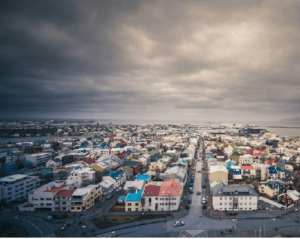 Only 300 individuals live on this more than 100,000 km2 island
Only 300 individuals live on this more than 100,000 km2 island
2. The society of Iceland is role model
Together with having one of the greatest rates of literacy and human development worldwide, Icelanders are also among the happiest people on earth. Impressive social equality means that, irrespective of professional status, everyone attends the same schools and hospitals and gets the same facilities.
With liberal policies, the country was among the most developed, but the 2008 crisis brought about a large number of unemployed people. In a participatory democratic style, the Icelanders got together to debate their own constitution.
Unlike what happened in other European countries, many critics claim that the island’s recovery was the outcome of actions aimed at the interests of the large banks, which the general population opposed.
 Sometimes, Icelanders unitedly protest for their democratic rights
Sometimes, Icelanders unitedly protest for their democratic rights
3. more volcanoes than players
Iceland made an amazing run in 2016 to make the European Championship quarterfinals. “We lost to a country that has more volcanoes than players,” said former player Lineker, summarizing English annoyance after the side defeated the England team.
4. The extremes
Landforms in Iceland are bizarre. In a relatively limited region, there are hot springs, lava, rocks, ice, hostile locations, and harsh weather.
NASA brought astronauts to the ice island in the 1960s for training in the Apollo space program. The range of mountains north of the Vatnajökull glacier functioned as a landscape reference in relation to the lunar surface.
5. Geysers
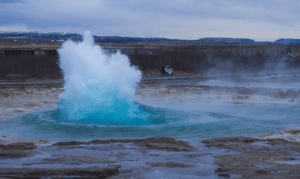
The word geyser comes from the Icelandic language. On the island, they are extremely common and are always bubbling up.
One of the most famous is Strokkur. With intense activity, at intervals of less than 5 minutes, it explodes in eruptions that reach 20 meters in height.
6. Volcano
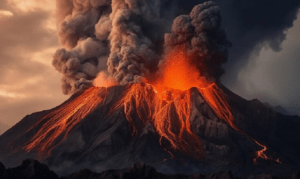
Furthermore, the volcanic activity is strong. All of European aviation was closed in 2010 because to one volcano, Eyjafjallajökull. Since the smoke was so bad, over 100,000 flights were cancelled, and it made headlines all throughout Europe.
Watching journalists venture out to pronounce the name of the Icelandic volcano was the most enjoyable aspect of all this. Try to pronounce the volcano the same way as you hear it pronounced!
7. The country of writers, Iceland
The literary habit of Icelandic people is another intriguing characteristic about them. As was already indicated, the literacy rate is high. Early on, reading and writing are urged to be developed in children.
Ten out of ten Icelandics have written a book. An amazing figure unmatched anywhere else in the world.
Some claim Icelanders write a lot because they experience protracted, dark times at home. Actually, though, the country exhibits a remarkable year-round range in brightness.
8. Extremely high latitude
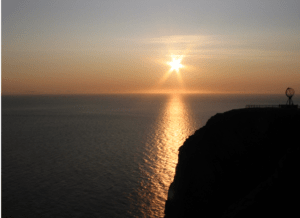
The island is situated on the brink of the Arctic Circle, and the sea current only serves to intensify the colder weather. However, one may see this feature in the sky.
June, in particular, has incredibly long days with the fabled midnight sun. Winter evenings stretch almost twenty hours. But now is also when one can witness the amazing northern lights.
9. Iceland is a country with few insects.
While they rule our world, ants are nonexistent in Iceland. Their nests cannot be built in low temperatures.
One hardly ever finds mosquitoes. Everyone is nearly always covered because of the low temperatures and the lack of food.
Cockroaches are a deceptive species, but in Iceland, you can be sure they won’t ever show up.
10. Totally pure water
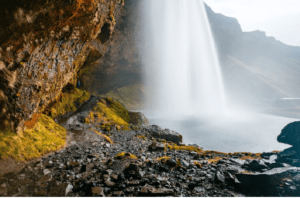
Icelanders themselves claim that their country has the best water on earth. The water emerges from the tap at a nearly chilly 4 oC. It is incredibly pure, straight from nature, untreated and unaltered by chemicals.
11 Thermal water
Believe it or not, Iceland has only frigid water. There, natural thermal waters are somewhat common.
Tourists frequent the Blue Lagoon, among other places. At 38 oC on average, the lagoon water is high in silica and other mineral compounds that are said to have therapeutic properties.
12. Clean Energy
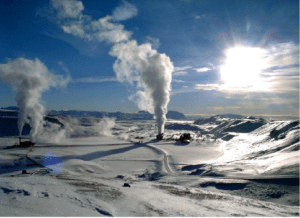
Iceland’s thermal sources provide it remarkable energy potential. Energy in the country is all renewable and clean.
The country uses hydroelectric facilities as another energy source, in addition to geothermal resources. A case study of producing inexpensive, clean energy from natural resources.
13. Iceland: an island connected to others
On the ice island, technology is never far away. Everyone can access the very fast internet. There is Wi-Fi coverage throughout 97% of Icelandic land, and all business buildings provide quick and free access. An island far and freezing, but soon linked to the entire globe.
14. The Arctic Fox
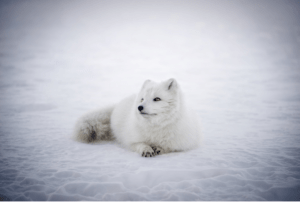
Iceland has a really small number of animals and insects. There is no equivalent of the profusion of migrating birds and aquatic life on land.
The Arctic Fox is the sole wild land mammal on the island. Amazingly lovely animal that reflects the national euphoria. Little is found in the surroundings, though.
Man brought in other animals. It is so with sheep, goats, reindeer, and horses. Actually, Iceland has twice the number of sheep as there are people.
15. Alaska and the Northern Lights
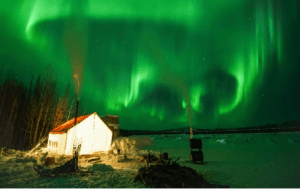
Considering where to see the Northern Lights, Iceland and Alaska both provide many opportunities to do so.
The Northern Lights, sometimes referred to as the aurora borealis, are visible in Iceland from late August to mid-April; September to mid-April is usually when they are most visible. Iceland’s most well-liked locations to see the Northern Lights are Reykjavik, Thingvellir National Park, and the Golden Circle.
However, Fairbanks and the surrounding areas are the epicenter of auroral activity, making Alaska renowned for its excellent Northern Lights viewing spots. In Alaska, September through April are the greatest months to observe the Northern Lights; late September to late March is usually the peak season.
Both countries offer unique experiences for Northern Lights enthusiasts. In the end, individual preferences for vacation experiences and the things one wants to do in addition to aurora hunting will determine which of Iceland and Alaska to visit for the Northern Lights.
16. Appreciating variety
In terms of human rights, Iceland is likewise quite developed. Quite accepting and understanding of everyone. Everybody has chances and no one is seen differently, including LGBTTs and immigrants.
Besides, Iceland is undoubtedly among the countries that value women the most. We first had a female head of state in Europe, and later, an openly gay head of state.
17. Iceland: a country of legendary animals
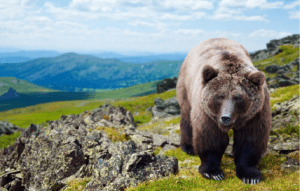
Iceland boasts the world’s highest percentages of atheists and agnostics. The bulk of the people nevertheless continue to believe in the legendary characters of Nordic mythology.
The Vikings conquered Iceland with a mix of Scandinavians and Celts. Despite having a Protestant majority, it managed to keep some of its legendary beliefs alive.
Since everything seems possible there, some Icelanders say they can speak with trolls, elves, and other natural beings.
18. Iceland is the safest country on Earth.
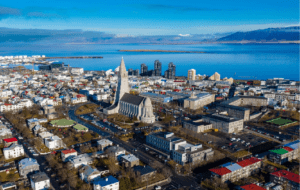
To close out this list positively. Apart from all this, Iceland boasts one of the longest life expectancies globally and, despite its active and hazardous volcanoes, is the safest country on Earth.
This is so because crime there is essentially nonexistent. Furthermore, lacking in the country are an army and armed street police. Never is the string empty. Moreover, over ten bankers have received jail terms in the last few years.
The Icelandic cops are successful on Instagram and enjoying themselves despite having little activity. Check out!
IV. In Iceland, what should one do?
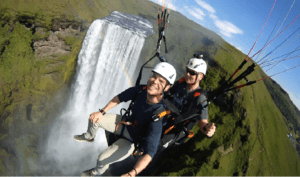
As of this moment, we know just a little about Irish history, geography, transportation, and some of the most amazing mysteries in the world.
The country offers a plethora of amazing tourist tours, as you can already see. To ensure you don’t miss any, we’ve divided the must-see tourist locations into the following categories: So shall we together explore the stunning locations in this amazing country?
Glacier Langjökull
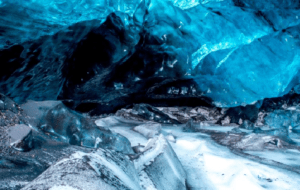
Starting the list in the chilly and daring environment of Iceland is the amazing Langjökull glacier, one of the biggest in the country and also the highest, reaching a height of over 1,300 meters. Visit the massive ice tunnel on this trip to be amazed by the vivid blue vision up close.
Furthermore, accessible are the amazing waterfalls known as Hraunfossar and Barnafoss, which translate to “lava fall” and “children’s fall,” respectively. Taking a guided tour is advised as the weather makes it unsafe to travel alone. The benefit is that you will learn about the glaciers’ history, construction process, and other interesting facts.
International Park Thingvellir
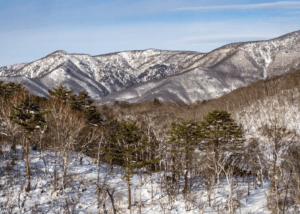
The most symbolic location in Icelandic history, this park is rich of breathtaking scenery and is regarded as a UNESCO world heritage site. It was such a stunning setting that it was previously used for one of the most viewed television shows worldwide. The fourth season of Game of Thrones was recorded there.
Part of the golden circle, the park sits on two tectonic plates that are progressively separating, North America and Europe. Only in the Silfra fissure is it feasible to dive and simultaneously touch two continental plates!
Other cracks can be walked between and the huge natural walls dazzle you in the park, including Almanagjá. Thingvellir motivates with its well-known waterfall of glistening waters and black rocks and provides the opportunity to tour the oldest still standing church in the country.
The interior exhibition gives you much more information on this amazing location, which is full of questions and answers.
Diamond Rock Beach
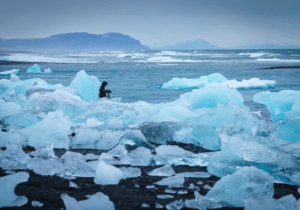
Why go to the beach in a place where it’s chilly, you may be wondering? The solution is easy! Its outrageous beauty and unique qualities. Have you ever thought it would be possible to go to a beach covered with ice blocks? Indeed, this is doable in Iceland!
The current at Diamond Beach carries multiple ice blocks to the shore. The beach still has black sand, which makes a real outdoor work of beauty against the blue sky and white ice.
Vik Village
A church with a view of the entire city and charming modest homes with red roofs will captivate any visitor to this little village of over 300 residents.
The beach in this little village is its main draw, though, and it’s perfect for anyone who enjoy taking pictures of breathtaking scenery. Another black sand beach in Iceland, it is notable for its unusual sand as well as its jutting rock formations.
The present television series “Vikings” was filmed in this well-known tourist destination because of its exceptional beauty.
Blue Lagoon
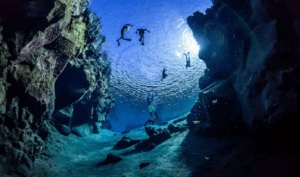
Don’t believe that Iceland has only chilly water. There, natural thermal waters are somewhat common.
Tourists frequent the Blue Lagoon, among other places. At 38 oC on average, the lagoon water is high in silica and other mineral compounds that are thought to have medicinal properties.
Huge thermal pool, this will be a tranquil experience to unwind and just enjoy the time, where relaxation is assured.
Noteworthy Northern Lights
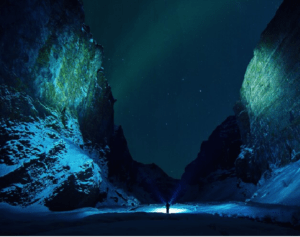
Finally, but just as importantly, Iceland is one of the very few places known to have the aurora borealis, a magnificent and singular phenomenon! When solar explosions come into contact with the magnetic field of Earth, they create a rainbow of colors that points toward the poles.
Though it is visible more readily in winter, particularly between November and January, the aurora borealis illuminates the night sky throughout this darker time of the year.
Remember to head north and as near to the Arctic Circle as you can when looking for them; some of the greatest locations in Iceland to observe the Northern Lights are Akureyri, Isafjordur, and Húsavík. It is important to keep in mind, though, that the Northern Lights, one of the island’s most looked forward to sights, only appear in the dark.

